IArtificial Intelligence is transforming recruitment, changing how companies find and secure top talent. The hiring landscape isn’t shifting toward eliminating human judgment—it’s creating a strategic alliance where AI manages data-driven screening while human insight finalizes decisions with nuanced understanding.
Key Takeaways:
- AI-powered hiring tools can reduce unconscious bias by up to 35% and predict candidate success with 90% accuracy
- Successful talent acquisition requires balancing machine efficiency with human emotional intelligence
- Companies implementing AI screening see significant reductions in hiring time and improved candidate quality
- Human oversight remains critical to interpret AI recommendations and assess cultural fit
- The most effective recruitment strategies integrate technology for initial screening while preserving human connection in final decisions
Ever felt overwhelmed by the flood of resumes hitting your inbox? I’ve been there too. As someone who’s built businesses from the ground up, I know firsthand how crucial hiring decisions are—and how draining the process can be.
AI is revolutionizing recruitment, but with important human guardrails
The numbers don’t lie. According to recent research, AI-powered hiring tools can reduce time-to-hire by up to 40%. This efficiency gain means your team spends less time wading through unqualified applications and more time engaging with promising candidates.
Here’s what I mean: Traditional hiring often traps us in repetitive tasks—scanning resumes, sending follow-ups, and scheduling interviews. AI handles these tasks automatically, freeing you to focus on what truly matters—building connections with potential team members.
But wait – there’s a catch: Companies should carefully consider the potential for algorithmic bias in these tools. Research suggests that without proper oversight, AI systems can perpetuate existing prejudices rather than eliminate them.
The human-AI partnership creates hiring magic
I remember when I first integrated AI screening into my manufacturing business. The immediate reduction in administrative burden was striking. My hiring managers suddenly had bandwidth to conduct thoughtful interviews rather than drowning in paperwork.
Strange but true: The most successful AI implementations don’t minimize human involvement—they enhance it. Aura AI found that companies with hybrid human-AI hiring approaches report 27% higher employee retention rates than those relying too heavily on either extreme.
The good news? You don’t need to be a tech giant to benefit from this approach. Small businesses can now access affordable AI recruitment tools that level the playing field when competing for talent. I’ve helped several clients implement these solutions effectively, creating systematic approaches that scale with their growth.
AI excels at objective assessment, humans at intuitive evaluation
Picture this: An AI system analyzes thousands of resumes in minutes, identifying candidates with the right skills and experience. Then, a hiring manager conducts in-depth interviews, assessing cultural fit, emotional intelligence, and those intangible qualities that make someone truly exceptional.
This balanced approach becomes increasingly important as AI continues transforming the hiring landscape. The companies that succeed will be those that find the sweet spot—leveraging AI’s analytical power while preserving the human connection essential to building strong teams.
Let that sink in.
Start small, scale strategically
I advise my clients to begin with targeted AI implementations that address specific pain points in their hiring process. For example, one appointment-based business I worked with started by automating initial candidate screening and scheduling, reducing their administrative workload by 60%.
Here’s the twist: As they grew more confident with the technology, they expanded its role while simultaneously deepening their human-centered interview approach. This created a virtuous cycle where better candidates reached the interview stage, and hiring managers could focus entirely on meaningful assessment rather than logistical hurdles.
The future belongs to hybrid hiring approaches
The coming years will see AI recruitment tools becoming increasingly sophisticated, but the fundamental principle remains: Technology works best when it amplifies human strengths rather than replacing them.
I’ve written extensively about how AI agents won’t replace you—but they might change what it means to be you. This principle applies perfectly to recruitment. The most successful hiring managers of the future won’t be those who surrender to algorithms or reject them entirely—they’ll be those who harness AI’s analytical power while bringing their uniquely human judgment to the final decision.
By striking this balance, you’ll not only streamline your hiring process but also build stronger teams capable of driving your business forward in an increasingly AI-integrated world.
The Hiring Wasteland: Why Traditional Methods Are Killing Your Talent Strategy
Traditional hiring practices have created a barren landscape for finding the right talent. I’ve seen firsthand how outdated approaches drain resources while delivering mediocre results.
The Triple Threat of Manual Hiring
Manual hiring doesn’t just waste time—it actively sabotages your talent acquisition efforts in three critical ways:
- Bias Blindness: Manual screening introduces 20-30% unconscious bias into hiring decisions, significantly reducing workforce diversity and limiting your talent pool.
- Time Vacuum: Hours spent manually reviewing resumes mean your team handles fewer candidates while competitors snatch up talent. That coffee-stained resume stack isn’t getting any smaller!
- Prediction Problems: Gut feelings and unstructured interviews fail to accurately predict how candidates will actually perform once hired. It’s like forecasting weather by looking out the window.
The stark reality? Your competitors who’ve embraced AI-enhanced hiring practices are finding better candidates faster while spending less. They’re using tools that reduce bias, automate screening, and identify success predictors based on data rather than hunches.
Don’t worry—this doesn’t mean replacing humans with robots. The most effective approach combines AI’s screening power with human judgment for final decisions. This balance lets you maintain authentic connections while eliminating inefficiencies.
Old-school hiring isn’t just outdated—it’s actively harmful to your organization’s future. The choice between modernizing your approach or falling behind gets clearer every day.

AI: Your Recruitment Revolution, Not Replacement
Smart Screening, Human Connection
The numbers don’t lie – AI is reshaping recruitment at breakneck speed. About 76% of companies plan to implement AI hiring technology within the next 12-18 months, while 70% of hiring teams already leverage these tools in their recruitment process.
AI excels at what humans find tedious: scanning resumes, identifying patterns, and predicting success. With 90% accuracy in predicting candidate success, these systems can improve workforce diversity by up to 35% by reducing unconscious bias.
Here are some top AI recruitment tools making waves:
- Phenom – Automates candidate matching and engagement
- Aura – Specializes in predictive analytics for hiring
- Deel – Handles global compliance and onboarding
- HireBee.ai – Offers comprehensive candidate screening
I’ve seen firsthand how AI can supercharge the hiring process without sacrificing personal connection. The key? Let AI handle the data-heavy lifting while you focus on what truly matters—building genuine connections with your future team members.

Navigating AI Fears: The Human-Technology Tango
Let’s face it—introducing AI into hiring processes can make your team nervous. I’ve seen this firsthand with clients who worry machines will take over their jobs. But here’s the truth: AI assists human judgment; it doesn’t replace it.
Balancing Machine Efficiency with Human Insight
AI systems are getting smarter at reducing bias in hiring. Advanced systems could cut bias by up to 50% by 2025, according to research from Finance Commerce. But these tools still need human oversight to work properly.
When I implemented AI screening at a manufacturing client, we found it flagged qualified candidates who used non-traditional formatting on resumes. This shows why the human touch remains crucial—we can spot value where algorithms might miss it.
Managing Team Concerns and Compliance
Your team’s resistance to AI might stem from genuine concerns about:
- Privacy issues with candidate data
- Compliance with hiring regulations
- Fear of skill devaluation
- Decreased human connection in hiring
I tackle this by being completely open about how AI makes recruiters more valuable, not less. As Deel’s research shows, recruiters using AI can spend 30% more time on high-value activities like candidate relationship-building.
The trick isn’t choosing between AI and humans—it’s finding the sweet spot where technology handles repetitive tasks while your team brings empathy, judgment, and cultural fit assessment to the table. This partnership approach has helped my clients cut hiring time by weeks while improving candidate quality.

Practical Roadmap: Implementing AI-Powered Hiring
Starting with an honest hiring workflow audit makes all the difference. I’ve seen companies waste thousands on fancy AI tools that didn’t address their actual bottlenecks. Map your current process from application to onboarding, highlighting manual tasks that eat up your team’s time.
Once you’ve spotted these efficiency gaps, pick AI solutions that specifically target them. Don’t fall for the all-in-one platform promises – choose tools that solve your unique problems. For instance, if screening resumes consumes most of your time, resume parsing AI might deliver better ROI than a complete HR overhaul.
Successful Integration Steps
The magic happens when your team actually embraces these tools. Here’s how to make that happen:
- Schedule hands-on training sessions (not just passive webinars)
- Create simple process documents with screenshots
- Assign AI champions who can help troubleshoot
- Start with one process change before adding more
I’ve found tracking the right metrics makes all the difference. My clients typically see 30% reduction in cost-per-hire and 9% improvement in quality when implementing AI correctly.
Remember that AI handles the tedious stuff so your human recruiters can focus on what really matters – building genuine connections with candidates. That’s where the real competitive advantage comes from in this human-AI partnership that keeps the human touch alive throughout your hiring process.

The Balanced Approach: Winning the Talent War
I’ve found that winning top talent isn’t about choosing between AI and human touch—it’s about blending both. Companies using this hybrid approach report 9% higher quality of hire compared to those relying solely on one method.
Technology Meets Human Insight
AI handles the heavy lifting while humans add nuance and connection. This partnership creates a powerful recruitment engine that drives results without losing the personal touch candidates crave.
The job market is shifting rapidly, with 10% of software positions now directly AI-related. This means your recruitment strategy needs to adapt just as quickly.
Fairness + Precision = Success
To maximize your hiring results, focus on these key elements:
- Automate initial screening while keeping human reviewers for final decisions
- Use AI to identify skill gaps in your workforce that aren’t obvious
- Train hiring managers to interpret AI recommendations rather than follow them blindly
- Check AI tools regularly for bias in language and selection patterns
The magic happens at the intersection of smart technology and human judgment—not at either extreme.
Future-Proofing Your Talent Acquisition
Strategic Balance of Technology and Human Touch
Getting your hiring approach right starts before you post a single job. I’ve found defining clear requirements upfront saves countless headaches later.
AI shines at the front end of recruitment, handling tasks that once consumed days of my time. According to Phenom’s research, companies using AI in recruitment see a 35% reduction in time-to-hire.
Here’s my practical framework for balancing tech with humanity:
- Define specific skills and attributes needed before recruitment begins
- Let AI handle initial resume screening and candidate ranking
- Reserve human judgment for cultural fit assessment and final decisions
- Spend quality time with your top 3-5 candidates instead of rushing through dozens
- Review outcomes quarterly to refine your process
The magic happens when technology filters the noise and humans make meaningful connections. I’ve seen this approach cut hiring costs while improving retention rates—a win-win that keeps getting better as AI tools advance.

Sources:
• Phenom Blog: Recruiting AI Guide
• Asendia Blog: How AI Recruiters Are Transforming the Hiring Landscape in 2025: The Future of Talent Acquisition
• Deel Blog: HR Automation Statistics Trends
• Aura Blog: AI Jobs 2025
• Finance Commerce: Companies Should Consider Likelihood of Biases in AI Hiring Tools








